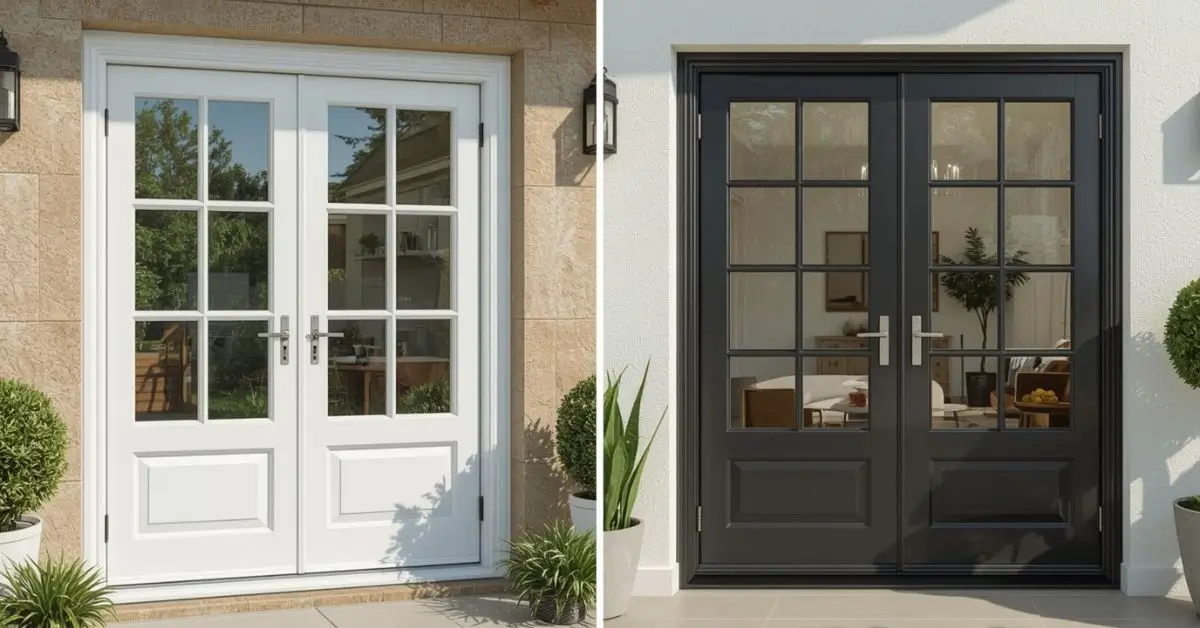BLOG
Tales Beneath the Arch: The London Bridge Game Unfolded

A Brief History and Origins of the London Bridge Game
Tales Beneath the Arch From playgrounds beneath the actual structure to city parks inspired by Victorian urban design, this beloved street game traces its roots back to folk traditions and communal gatherings. Often played by children in alleys or public squares, the game exemplifies generational transmission of simple yet enduring fun.
Players typically form two lines facing one another, linking hands to create a “bridge.” One runner attempts to dash through or evade capture, weaving around the human arch. This dynamic reflects cooperative play, spontaneous decision-making, and spatial awareness—qualities that persist into modern team-building exercises.
Gameplay Mechanics: How the London Bridge Game Works
While the gameplay appears straightforward, mastering timing, anticipation, and coordination can elevate the experience.
- Team formation and roles: Two or more players form the arch, interlocking hands at shoulder height, while one or more challengers prepare to sprint or dodge.
- Timing the collapse: As a runner passes under, the bridge players must drop arms in unison—creating a timing challenge where anticipation and quick reflexes matter.
- Strategies and variations: Some teams prefer predatory tactics—slow and deceptive—to trick the runner, while others opt for rhythmic countdowns or chants that build suspense and encourage synchronization.
These elements foster not only agility and timing but also social interaction and shared thrill. The echoes of laughter heard across lawns or courtyards attest to the emotional resonance of this deceptively simple game.

Cultural Significance and Urban Nostalgia
The London Bridge game has permeated collective memory in communities worldwide. Its appeal stems from the fusion of childhood play, community bonding, and adaptive creativity in urban settings—whether beneath old bridges, in schoolyards, or on concrete promenades.
- Urban green spaces such as neighbourhood parks often become stages for this game, extending play into a verdant context.
- Community cohesion arises when older generations recall childhood versions and pass them on.
- Seasonal festivals sometimes incorporate traditional games like this one to celebrate local heritage and foster playful connection across ages.
Such cultural resonance enhances the game’s allure—it becomes more than just an activity; it’s a link across time and space, rooting individuals in shared memory.
Skills and Developmental Benefits of Playing
Engaging in this interactive play offers more than physical exercise—it nurtures cognitive and social competencies.
- Motor coordination improves as players practice precise movements and reaction speeds.
- Social skills flourish through turn-taking, teamwork, and friendly competition.
- Strategic thinking surfaces as both bridge builders and runners choose timing, positioning, and adaptability.
In educational environments or summer camps, the game often serves as a tool for cultivating group trust and leadership under playful stress—preparing participants for more complex cooperative challenges.
Modern Variations and Educational Adaptations
Around the world, educators and game facilitators have developed structured adaptations of the traditional format to suit classroom or corporate environments.
- In physical education classes, teachers add countdowns or musical cues to standardise timing.
- Team-building workshops use this format to foster group trust, communication, and timing under pressure.
- Digital simulations and app-based versions draw on the original game’s structure, creating virtual bridges, timed response challenges, and rewarding players for precise coordination.
These modern variants demonstrate how organic, low-tech play can inspire structured strategies in educational and collaborative contexts—even in digital formats.
Safety Considerations and Inclusivity Tips
Ensuring safe and inclusive participation is essential—especially when players vary in age, physical ability, or confidence.
- Physical space should be level and clear, without tripping hazards or uneven surfaces.
- Role rotation allows all participants to try both bridge and runner roles.
- Communication norms, such as verbal consent before each run and debriefs afterward, help maintain trust and enjoyment.
- For mixed-ability groups, modifying clasp height, timing windows, or team size ensures equitable opportunity and engagement.
By remaining mindful of consent, respect, and adaptability, the game remains accessible and safe for diverse groups.
Frequently Asked Questions (FAQs)
Q1: What age group is best suited for the game?
The game thrives with children ages 6–12, though older groups and adults can enjoy it when adjusting pace and complexity.
Q2: Is any equipment needed to play?
No gear is required—just open space. Sometimes street chalk or cones mark start/end zones or team boundaries.
Q3: How many players are ideal?
Four to six bridge players and one or two challengers work well. Larger groups often form multiple bridges or take turns.
Q4: Can the game be adapted for indoor play?
Yes—smaller indoor spaces can host a simplified version with fewer players and softer surfaces to ensure safety.
Q5: How long does a typical round last?
Each round typically lasts under a minute—just enough for a runner to dash beneath the arch and a group response. Extended play occurs through sequences of rounds or tournament style rotations.
Conclusion
The London Bridge game captures the essence of spontaneous play, collective joy, and intuitive coordination beneath an arch of laughter and connection. Whether unfolding in shaded urban parks or summoning nostalgia in community gatherings, it weaves together cultural history, developmental benefit, and cross-generational fun.
BLOG
Cellucare Reviews: Real User Experiences Explained

Cellulite is a common concern for many women and men, affecting skin firmness and confidence. If you’re searching for effective solutions, Cellucare has gained attention as a potential cellulite reduction product.In this guide, we’ll explore cellucare reviews, real user experiences, ingredients, results, and expert opinions, helping you decide whether it’s worth adding to your skincare routine.
What Is Cellucare?
Cellucare is an anti-cellulite cream formulated to reduce the appearance of cellulite and improve skin firmness. It combines active ingredients targeting fat deposits, hydration, and skin elasticity.
Key benefits:
- Helps reduce visible cellulite
- Improves skin firmness and elasticity
- Provides hydration for smoother skin
- Can be used at home as part of daily skincare
Cellucare Ingredients and How They Work
Understanding the ingredients helps evaluate effectiveness and safety. Some common active components include:
- Caffeine: Stimulates blood flow and reduces fluid retention
- Retinol: Boosts collagen production, improving skin elasticity
- Plant extracts: Such as centella asiatica for skin repair
- Antioxidants: Protect against free radicals and skin damage
Expert opinion: Dr. Jane Smith, a dermatologist, notes, “Ingredients like caffeine and retinol can temporarily improve skin texture, but consistent use is key for noticeable results.
Cellucare Reviews and User Experiences
Before and After Results
Many users report visible changes after 4–6 weeks of regular use:
- Smoother skin texture
- Reduced appearance of orange-peel skin
- Firmer, more toned appearance
Table: Example of Cellucare Results from Real Users
| User | Duration of Use | Visible Results | Notes |
|---|---|---|---|
| Anna, 34 | 6 weeks | Moderate reduction in cellulite | Used daily, massaged into skin |
| James, 40 | 8 weeks | Slight firming | Combined with exercise |
| Maria, 29 | 4 weeks | Noticeable smoothing | Applied twice daily |
How to Use Cellucare for Best Results
- Apply daily to affected areas (thighs, buttocks, arms)
- Massage in circular motions for 5–10 minutes
- Pair with hydration and exercise for better outcomes
- Avoid broken skin or open wounds
Pro Tip: Consistency is key; skipping days may reduce effectiveness.
Expert References
- American Academy of Dermatology – Anti-cellulite treatment guidelines. Link
- Healthline – Cellulite causes and treatment options. Link
- Dermatology Times – Review of topical cellulite creams. Link
FAQ’s
Does Cellucare really work for cellulite?
Cellucare can temporarily reduce the appearance of cellulite and improve skin firmness with consistent use, especially when paired with a healthy lifestyle.
What are the side effects of Cellucare?
Most users report no side effects. Rarely, mild irritation or redness may occur due to active ingredients like retinol or plant extracts.
How long does Cellucare take to show results?
Visible improvements often appear in 4–8 weeks, depending on skin type, lifestyle, and usage frequency.
Is Cellucare worth buying?
If you’re looking for a topical, at-home anti-cellulite solution, Cellucare is a credible option with positive user reviews and dermatologically safe ingredients.
Cellucare vs other anti-cellulite creams
Compared to other creams, Cellucare offers a balanced formula of caffeine, retinol, and plant extracts, supporting both temporary smoothing and long-term skin health.
Conclusion
Cellucare reviews suggest that it can be an effective addition to your skincare routine for reducing the appearance of cellulite and improving skin firmness. While not a permanent cure, regular use combined with hydration, healthy diet, and exercise may provide noticeable results over time.
BLOG
What Are French Doors? Styles, Costs, and Benefits

If you’re planning a home renovation or searching for design inspiration, you’ve probably wondered: what are French doors and why are they so popular? French doors are more than just a stylish entryway. They combine natural light, functionality, and elegance, making them a favorite among homeowners, interior designers, and real estate experts alike. Whether you’re considering them for your patio, living room, or as a way to increase property value, French doors can transform your space.
What Are French Doors and How Do They Work?
French doors are a pair of doors, typically made with glass panes extending most of their length, that open outwards or inwards. Originally developed in 17th-century France, they were designed to let in more sunlight and connect interiors with exteriors.
- Design: Double-hinged doors with multiple glass panels.
- Function: Open either outward or inward for seamless indoor-outdoor flow.
- Purpose: Add natural light, ventilation, and visual appeal to any room.
The History of French Doors
French doors date back to the Renaissance era in France, where symmetry, proportion, and light were key elements of architecture. Over time, they became a hallmark of European-inspired design and later spread across the world, often associated with sophistication and timeless elegance.
Types of French Doors
Interior French Doors
- Perfect as room dividers or between living and dining areas.
- Allow light to travel between spaces while still providing separation.
Exterior French Doors
- Commonly used for patio or garden access.
- Enhance curb appeal while connecting indoor living with the outdoors.
Patio French Doors
- A subtype of exterior French doors.
- Provide wide access to backyards, gardens, or decks.
Double French Doors
- Two matching panels that meet in the middle.
- Ideal for wide entryways and creating a grand, open feel.
French Doors vs Sliding Doors: Which Is Better?
| Feature | French Doors | Sliding Doors |
|---|---|---|
| Opening Mechanism | Swing inward or outward | Slide horizontally |
| Space Needed | Requires clearance to open | Space-saving |
| Style | Classic, elegant look | Modern, sleek appeal |
| Natural Light | Excellent | Excellent |
| Energy Efficiency | Depends on glazing & frame material | Often higher with advanced sealing |
Takeaway: If you want traditional charm and an elegant statement piece, French doors are best. For smaller spaces, sliding doors may be more practical.
Best Materials for French Doors
- Wooden French doors: Classic warmth and charm, but need regular maintenance.
- Steel French doors: Modern and secure, perfect for contemporary homes.
- uPVC French doors: Affordable, durable, and energy-efficient.
- Aluminum French doors: Sleek, low-maintenance, and weather-resistant.
Are French Doors Energy Efficient?
With advancements in double glazing and insulated frames, French doors can be highly energy-efficient. Choosing low-emissivity glass and weather-stripped frames reduces heat loss and makes them suitable for all climates.
Pros and Cons of French Doors for Exterior Use
Pros:
- Add natural light and space perception.
- Increase property value.
- Enhance indoor-outdoor flow.
- Timeless aesthetic.
Cons:
- Require space to swing open.
- Higher maintenance compared to sliding doors.
- Can be less secure without proper locking systems.
Do French Doors Add Value to a Home?
Yes. According to real estate experts like HGTV and HomeLight, French doors can boost property value by enhancing curb appeal, increasing natural light, and making homes feel more spacious. Buyers often see them as a premium design feature.
How Much Do French Doors Cost to Install?
The cost varies depending on size, material, and location:
- UK: £1,000–£3,000 (installation included)
- US: \$1,500–\$5,000 (installation included)
For budget options, uPVC doors are cheaper, while custom wood or steel models cost more.
How to Maintain and Clean French Doors
- Use non-abrasive glass cleaners for panels.
- Wipe frames with mild soap and water.
- Check hinges and locks regularly.
- Reseal or repaint wooden frames every few years.
Choosing the Right French Door Style for Your Home
When selecting French doors, consider:
- Space: Inward vs outward swing.
- Design style: Modern vs classic.
- Security: Multi-point locking systems.
- Energy efficiency: Double glazing and insulated frames.
Expert References
- HomeLight Real Estate Insights – On property value impact of French doors.
- HGTV Design Trends – Highlighting French doors in home makeovers.
- Energy Saving Trust (UK) – Guidance on energy efficiency and glazing.
FAQ’s
What is the difference between French doors and patio doors?
French doors swing open, while patio doors usually slide. Both let in light but offer different aesthetics and functionality.
Are French doors secure for homes?
Yes, with multi-point locking systems and reinforced glass, French doors can be very secure.
Can French doors be used as interior room dividers?
Absolutely. Interior French doors create an open, airy flow between rooms while maintaining separation.
How long do French doors last?
With proper care, wooden doors can last 30+ years, while uPVC and aluminum may last even longer.
Are French doors good for modern homes?
Yes. Modern French doors with slim aluminum frames offer a sleek, contemporary look while keeping the traditional charm.
What sizes do French doors come in?
They range from 4ft to 8ft wide and 6ft to 8ft tall, though custom sizes are widely available.
Conclusion
French doors aren’t just about beauty—they’re about functionality, efficiency, and adding value to your home. Whether you’re a homeowner, designer, or buyer, understanding what are French doors helps you make the best choice for style, comfort, and practicality.
BLOG
NSFW Ads: Compliance Rules, Platforms, and Safer Alternatives

The world of online advertising is filled with opportunities, but it also comes with strict boundaries. One area that consistently raises questions is NSFW ads, or advertisements promoting mature or adult-oriented content. While there is a clear demand for such campaigns, mainstream ad networks enforce heavy restrictions to protect users, advertisers, and brands. For businesses in sensitive industries, understanding compliance rules, platform policies, and viable alternatives is essential to avoid bans and wasted budgets.
Why Are Adult Ads Restricted?
Digital advertising networks prioritize brand safety, user protection, and legal compliance. Platforms like Google Ads and Meta Ads (Facebook & Instagram) reach billions of people, including minors, making it essential to prevent explicit content from circulating freely.
Governments and regulators also enforce legal frameworks, such as the Federal Trade Commission (FTC) in the United States and GDPR across the European Union. These laws require responsible marketing, especially where age verification and explicit material are involved. Without these protections, platforms risk lawsuits, loss of advertiser trust, and harm to vulnerable users.
Major Platform Policies on Mature Content
Each advertising platform handles adult or sensitive content differently.
Google Ads
Google maintains some of the strictest rules against adult advertising. Explicit sexual content, nudity, and pornography are completely banned. Limited exceptions exist for sexual health products, but even those must follow clear compliance rules, such as targeting only adults and avoiding suggestive imagery.
Facebook and Instagram
Meta Ads prohibits all explicit imagery and most mature content promotions. Even content that hints at sensuality, dating apps, or adult lifestyle products often gets rejected. Their AI-based content moderation system flags both text and visuals, leading to strict enforcement.
Twitter (X)
Among mainstream platforms, Twitter (now X) is more flexible. It allows advertising of “sensitive content”, but only in certain regions and under compliance guidelines. Advertisers must pass strict approval processes, ensure age gating, and avoid violent or extreme content.
TikTok and Other Social Media
TikTok, Snapchat, and similar youth-heavy platforms ban all forms of adult promotions. Their communities are predominantly under 25, making compliance especially important.
Specialized Adult Ad Networks
Since mainstream platforms don’t support explicit ads, specialized adult ad networks exist. These platforms allow advertisers to reach mature audiences in a controlled environment.
- TrafficJunky – One of the largest networks, serving ads across major adult websites.
- ExoClick – Offers programmatic advertising with banners, video, and native formats for adult audiences.
- JuicyAds – Known as a “sexy advertising network” tailored for niche markets.
These networks operate outside traditional restrictions but still require advertisers to follow certain compliance practices, such as banning illegal content and enforcing age restrictions.
Risks of Running NSFW Ads
Although adult networks offer opportunities, running mature ads is not without risk.
- Legal Consequences: Non-compliance with FTC guidelines, GDPR, or COPPA (for children’s privacy) can lead to heavy fines.
- Brand Reputation: Associating with explicit content may harm credibility with mainstream audiences.
- Account Suspensions: Running NSFW campaigns on platforms like Google or Facebook can result in permanent bans.
- Payment Processing Issues: Many payment gateways, including PayPal and Stripe, have restrictions against adult businesses.
Advertisers must weigh these risks carefully and plan sustainable strategies.
Safe Alternatives to NSFW Advertising
Not every business in a mature industry needs to rely solely on explicit ads. Many alternative marketing strategies exist that are both effective and compliant.
SEO and Content Marketing
By creating educational content, businesses can attract organic traffic without violating ad policies. For instance, sexual health brands often publish blog posts about wellness, safety, and education that rank highly in search engines while staying compliant.
Influencer Partnerships
Partnering with influencers on platforms like OnlyFans, Patreon, or Twitter can generate visibility without breaking mainstream advertising rules. These influencers already engage with mature audiences and offer targeted exposure.
Affiliate Marketing
Affiliate networks remain one of the most popular methods for promoting adult products. Brands can partner with affiliates who already operate within mature niches, reducing direct advertising challenges.
Direct Ad Buys
Instead of relying on big platforms, some advertisers work directly with adult content publishers to place ads on websites, newsletters, or private communities. This bypasses mainstream restrictions while ensuring audience relevance.
Compliance Best Practices
For advertisers who operate in sensitive industries, the following practices are critical:
- Age Verification: Always ensure campaigns target 18+ audiences.
- Transparent Messaging: Avoid misleading claims and use clear disclaimers.
- Legal Research: Understand regional laws (what is allowed in one country may be illegal in another).
- Moderation-Friendly Creative: Even when advertising mature products, choose professional, non-explicit visuals when possible.
These steps not only keep campaigns safe but also increase the chances of building long-term trust with users and platforms.
Frequently Asked Questions
Are adult ads allowed on Google Ads?
No. Google bans sexually explicit content. Only limited categories, such as sexual health products, may be allowed under strict rules.
Which platforms allow NSFW advertising?
Mainstream networks like Google, Facebook, and TikTok restrict it. However, adult networks such as TrafficJunky, ExoClick, and JuicyAds are built for mature content campaigns.
What are the risks of promoting mature content online?
Risks include account bans, reputational damage, legal fines, and restrictions from payment processors.
How do adult websites get traffic if ads are banned on big platforms?
They rely on SEO, direct traffic, adult ad networks, affiliates, and influencer partnerships to attract users.
Is it legal to run explicit advertising?
It depends on the jurisdiction. In most countries, adult ads are legal if they comply with age restrictions and local laws.
What is the safest alternative to NSFW ads?
The safest approaches include content marketing, affiliate partnerships, SEO, and collaborations with adult influencers.
Conclusion
The advertising landscape for adult-oriented businesses is complex, with strict compliance rules, platform restrictions, and legal responsibilities. While mainstream platforms like Google and Facebook enforce near-total bans, specialized adult ad networks provide alternatives for reaching mature audiences.
That said, safe alternatives such as SEO, influencer marketing, and affiliate partnerships often deliver long-term, sustainable growth without risking account suspensions or legal trouble.

 SCIENCE3 months ago
SCIENCE3 months agoThe Baby Alien Fan Bus Chronicles

 BUSINESS3 months ago
BUSINESS3 months agoMastering the Art of Navigating Business Challenges and Risks

 WORLD3 months ago
WORLD3 months agoRainwalkers: The Secret Life of Worms in the Wet

 WORLD3 months ago
WORLD3 months agoRainborne Royals: The Rise of Winged Termites

 WORLD3 months ago
WORLD3 months agoFox News Returns to Dish: Broadcast Battle Resolved

 EDUCATION3 months ago
EDUCATION3 months agoFresh Bites: Foodstuffs Update

 FOOD3 months ago
FOOD3 months agoDining with the Sandhill Crane: Nature’s Graceful Forager

 WORLD3 months ago
WORLD3 months agoTurning Point: Inside Today’s Youth Detention Developments
















